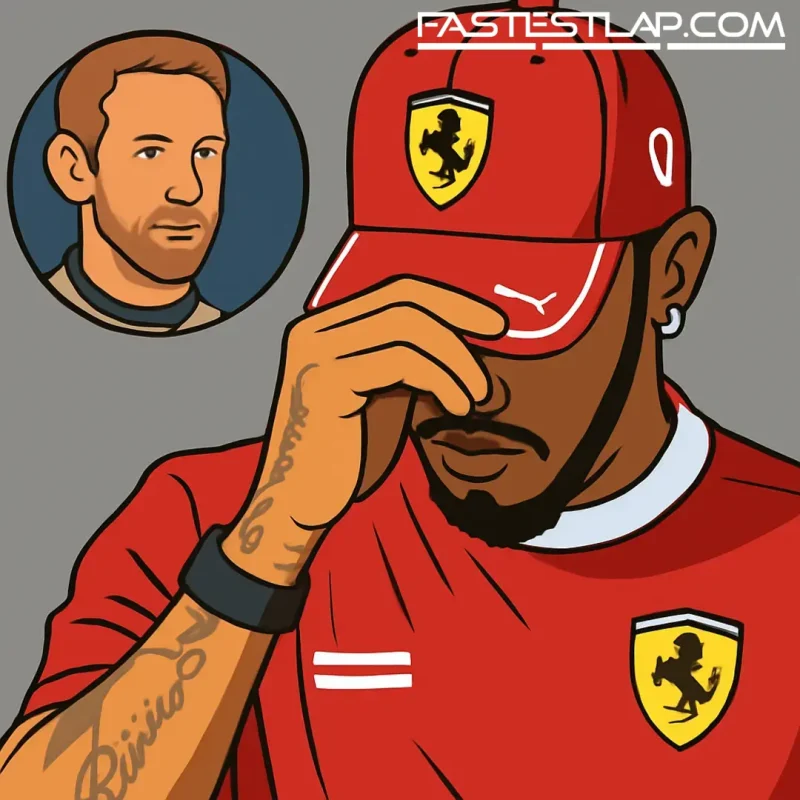Button: Hamilton’s 2026 form will decide if he goes again in 2027
Jenson Button doesn’t think Lewis Hamilton’s next big career call arrives this winter. He reckons it lands when the 2026 cars roll out — and the answer will be written in Hamilton’s results.
Hamilton’s move to Ferrari dominated the 2025 pre-season, the sort of transfer that ricochets through a sport. The early pop came in Shanghai with a lights-to-flag Sprint win and a pointed message to the doubters. Since then, the highs have been sparse. Strategy gripes, a thin upgrade cadence on the SF-25 and a few brutally honest self-assessments from Hamilton himself have told the story as much as the lap charts. He came back from the summer break sounding defiant — “the fight’s not over” — but as the paddock packed up after Singapore, round 18, he was still chasing a first grand prix podium in red.
Button, who shared a garage with Hamilton at McLaren and knows how he ticks better than most, told Sky Sports he’s seen flashes that suggest the fire’s still very much there — Shanghai especially — but not yet the consistency to lean on. Part of that, he said, is familiarity. Hamilton swapped not just teams but the entire ecosystem he’d built at Mercedes over a decade. You don’t plug-and-play that kind of comfort, however accomplished you are.
Which is why 2026 looms so large. Formula 1 will reset the board with new power units and aero, a regulation shift big enough to shuffle the deck for everyone — drivers, teams, engineers. Button’s view is stark and fair: that’s when we’ll either see Hamilton at his best again, or we’ll see him thinking about walking away.
It fits the contract chatter. Hamilton signed a multi-year deal to join Ferrari, widely reported as two years with an option for 2027 in his hands. If those reports are accurate, the decision really is his. Ferrari can push and persuade, but the trigger for a third season would be pulled by Hamilton alone. And he’s never been shy about setting his own terms.
There’s a practical, slightly ruthless logic to all of this. If Ferrari hits the 2026 regulations and gives Hamilton a car he trusts, he’ll stick around to try and cash it in. If the team misses — or if the new formula exposes more of the same inconsistency that’s blunted his first year in red — the calculus changes. At 40, he’s racing against time as much as rivals, and legacy is the silent passenger in the cockpit.
The irony is Hamilton hasn’t exactly looked lost this year. The pace is there in bursts, the racecraft definitely is, and the Sprint win showed there’s still a fight reflex when the car behaves. What’s missing is continuity: the feeling that every lap belongs to him, not just the occasional session. Ferrari knows this as well as he does. Strategy miscues have softened the scoreline, development’s felt hesitant, and the team hasn’t always made life simple on Sundays.
So Button’s verdict doubles as a timeline. It may take Hamilton the full first season to truly embed at Maranello — different culture, different tools, different voices in his ear — and then the whole game changes anyway. That makes 2026 the proof year. If he’s contending in the first phase of the new rules, the question answers itself. If not, the option to call it a day becomes something other than hypothetical.
The paddock won’t wait long for clues. Pre-season next year will be theatre, but the first five or six races of 2026 will be the tell. Does the SF-26 — whatever Ferrari calls it — give Hamilton the front-end bite he likes and a rear he’ll trust on the edge? Does the hybrid deployment let him attack, or does he spend Sundays negotiating around compromises? Those are the details that sway a champion. Not sentiment, not slogans.
Plenty of champions have changed teams chasing a second act and needed more than a season to sync up. Some never did; some did and found a second wind. Hamilton’s earned the runway to find out which camp he falls into. Button’s point simply strips it down to the obvious: he’ll decide with a stopwatch, not a press release.




